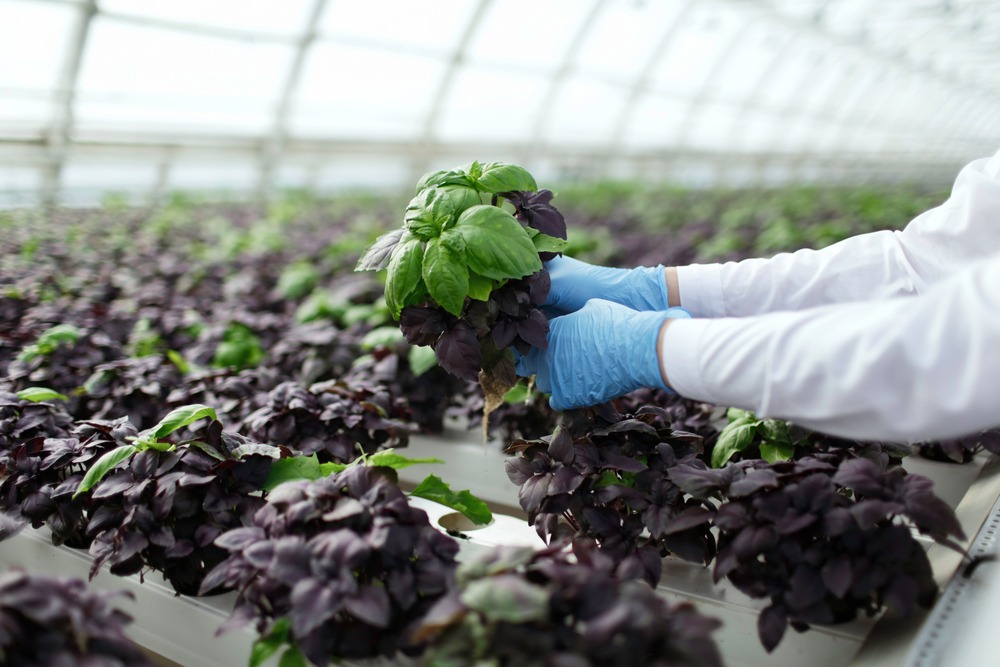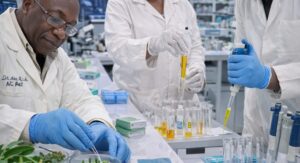As the sun sets on food tech in 2018 and the dawn of a new year arrives, what can we say about 2018 and what can be expected of 2019? A diverse number of food tech innovations were developed and used by an equally diverse set of generations, dominated the agricultural industry in 2018. A wide range of preferences, including the aging Baby Boomers and spreading into the next set of consumers, Generation Z, means evolving changes in the market. Taking the time to review what came to pass and what the future may hold within the food and agriculture sector helps to set the tone for the New Year.
Coming of Age
Boomers are still booming. They hold up to one-quarter of the population and still have the most buying power of all the generations. This generation is also increasingly becoming more tech-savvy and conscious of where their food is coming from and what is being used to produce it. Along with Millennials and Gen Z, Boomers are demanding increased transparency in their food choices. As Baby Boomers continue to embrace technology, they also become more aware of the options available to them. This is why many of the changes that have happened in the food and agriculture market during 2018 centered around technology.
Packaging Innovations
Due to the increase in demand by all generations for fresh, ripe, unprocessed food, a packaging revolution is needed so that these demands are continually being met. Consumers of every age are also insisting on packages that are made of biodegradable and environmentally-friendly materials. Several companies such as TIPA have been successful in combining environmentally viable methods that increase efficiency and shelf life. Two more examples are US Bioplastics and Eco-Products. Generation Z and Millennials will continue to demand fresher food with a longer shelf life and less impact on the environment. This means that 2019 will continue to see the development of innovative package options.
Shop Local
Local produce markets surged in 2018 and show no indication of slowing down in 2019. People are choosing local, fresh foods and processed, prepackaged items are becoming less desirable. Increased efficiency will be a continued focus in the next year when it comes to shipping. Getting produce to buyers as soon as possible will require adept procedures in harvesting and transporting. The more effective the process, the higher the profit. Using software programs, such as the one created by LocalizeYourFood, creates databases that allow producers and consumers analyze sustainability and local sourcing initiatives. And indoor agriculture groups such as Plenty are planning to grow leafy greens and vegetables close to their consumer base with full traceability. The demand for organic products was at an all-time high in 2018 and this movement is expected to expand into new traceability and transparency certification programs in 2019.
Sustainable and Successful
The 2018 crop season experienced an increased emphasis on providing product to market in a sustainable, and environmentally-friendly manner. Some have started to describe what that looks like with the term Regenerative Agriculture. Environmentalists called upon the ag sector to reduce their carbon footprint by decreasing greenhouse emissions. These pressures are being felt by the industry and according to the Canadian Press in April 2018, Canada, in general, isn’t on pace to meet the targets set in the Paris climate change accords. The US Government, on the other hand, is not even part of the Paris agreement and doesn’t have the environment as a top priority even though many of the global companies pushing hard on agriculture to reduce GHG’s are US-based. This year will see increased pressure to develop sustainable and transparent methods; if they don’t, the future may hold penalties, both financial and in the market. There is hope, as organizations like the Canadian Roundtable for Sustainable Crops and FieldtoMarket work within agriculture to provide the industry stakeholders with grain sustainability and ensure open communication on sustainability results within the sector. [Land O’Lakes SUSTAIN is also offering tools for this.] Consumers expect high quality and humane food produced using sustainable resources and this trend will remain strong in the new year and for many years to come. Two food tech startups working on products and research to help farmers grow more sustainably are Indigo Agriculture and Midwestern BioAg.
Information Technology
Information technology (IT) continued to take the food and agriculture industries by storm and 2018 saw a particularly large amount of IT integration into farming operations as cellular coverage and high-speed internet in rural areas continues to improve. Farmobile is leveraging that infrastructure to automate the collection of farm equipment data and turn it into valuable market intelligence. With these types of integrations, easier data collection enhances the quality of decisions being made regarding profit, production, and demand in the market. Agrimatics is another equipment data startup.
Blockchain technologies showed promise in being valuable assets to the industry in 2018 and further adoption is expected. In early 2018, Louis Dreyfus successfully conducted the first agricultural commodity trade using blockchain. Blockchain is a ledger-based digital technology which speeds up transactions, decreases labor cost, and dramatically reduces the chances of human error and fraud. This past year saw continued tests to ascertain the viability of this technology in the agricultural industry. Banks and trading houses are joining forces to implement more of these transactions. Usage of blockchain will only increase in 2019 but in order for it to achieve success, the industry will need to adopt system-wide changes by creating policies and standards. AgriChain (formerly BlockGrain) and Ripe.io are food tech startup examples.
High-Tech in a New-Tech World
The demand and high premium being paid for organic, non-GMO, free-range and other value-added product and livestock has also increased the requirement for accountability. High-tech inventions such as RFID (Radio-Frequency Identification) sensors is a trend that skyrocketed in 2018. Consumers are able to receive field to table tracking that can include information about each process the produce/meat went through and its origin. Traceability became a significant part of 2018 in agriculture and food growing. The ease of implementing transparency will continue to improve as solutions mature and gain further market traction such as FoodLogiQ. In 2019, traceability will develop to a point that allows consumers to be much closer to an environment that allows them to walk into a store, select a product, scan it with their smartphone, and know where that item was grown, what products were used in its growth process, and be content in the fact it is exactly what they were looking for.
The more information and data farmers have, the more profitable their farms will be. Decisive Farming, in 2018, took data collection one step further by being the first in Canada to offers producers financial compensation for their field data while also providing insights on how the farm can further increase production profitability. There is a high degree of likelihood that by 2024 the vast majority of agricultural businesses will leverage precision agronomy or other innovative food tech to become more profitable, sustainable, and accountable.
Artificial Intelligence in Agriculture
Other high-tech innovations surging through the food and agriculture sector include artificial intelligence (AI). Machine learning is being applied to the vast amount of data that is being collected through crop sensors and other technologies, to reduce the labor intensity of crop production, efficiently collect data, and reduce input costs. Hummingbird Technologies is a great example of how AI can be applied in agriculture. They analyze the data collected by imagery to aid in monitoring fields, therefore reducing the amount of time required to check on crops. A fundamental trend in AI that will see significant growth in 2019 will be the use and number of AI cloud services. Industry tech giants like Microsoft, Amazon, Google are hiring talent in the area of artificial intelligence at breakneck speeds and exorbitant salaries. There are also several IoT startups such as MNUBO and The Yield working in agriculture that are gaining significant traction by working with agriculture-based companies.
Politics in Agriculture
Politics always play an integral role in agriculture trends and 2018 was no different. The US trade dispute with China and lingering tariffs between the US, Canada, and Mexico affected what will be grown in 2019. During the summer of 2018 soybeans were at the heart of the US-China trade war and it was predicted that their production would be dramatically reduced in the 2019 growing season. It was expected that corn growth would reach an all-time high to supplement the decrease in soybeans. December 2018 changed that when China agreed to buy a substantial amount of US agricultural products, including soybeans, causing prices for soybeans to increase. This situation has ripple effects for other markets such as Canada and Mexico. For 2019 expect continued political tensions and a bumpy road of trade relations to have a direct impact on what is grown and the profit potential for certain crops.
A Bit Different
What were some more interesting trends in food for 2018? “Micro-livestock” is one that seems to have gained ground last year and every indication is that it will continue throughout 2019. What is micro-livestock? In one word, bugs. Insects are trending as a food source. Consumers are looking for new sources of protein and certain insects are high in protein content. Insects aren’t only being used as a human food trend. Companies, such as Enterra Feed, are also using insects for pet and livestock feed as a way to introduce higher levels of protein and another nutrient to animals. These types of companies keep food wastage out of landfills by using food waste for the production of insects like the black soldier fly larvae.
Reduction of food waste was also a significant focus in 2018. In the US alone, over 130 million pounds of food is wasted each year. Innovative ways to reduce this wastage continued to be a big trend in 2018. Geovisual Analytics is leading the trend by using airplanes, drones, and smartphone technology to monitor fields and then applying AI algorithms to help farmers reduce wastage and increase profitability. Another area of focus to reduce food wastage for 2019 will be to eliminate “best before” dates on a number of products like Tesco did this past year.
Marijuana legalization in Canada in 2018 has opened the door for growing opportunities in 2019. The demand for this product in North America is so high (no pun intended) that producers are struggling to keep product on the shelves. With such an increase, applications for production of hemp and marijuana crops will be at unprecedented levels this coming year.
And Now…
The information age is in full swing and consumers are demanding more of it. Embracing technology will keep farmers ahead of the trends and allow them to maintain a sustainable corporation. An informed farmer is a profitable one. Data collection and management equates to development of the environmentally responsible farms consumers are looking for.
No matter what the trends are, 2019 looks to be an innovative year for food companies and farmers. Food companies and farms that take the time to invest in education and technology will make sure that the future is bright for their next generation.
About the Author: Remi Schmaltz is CEO of Decisive Farming, a Canadian software program for farms offering precision agronomics, data management, crop marketing, and telematics services. He has extensive agriculture knowledge after taking over his family’s ag retail company Dynagra Corp with his brother where he started incubating new technologies in farming resulting in the launch of Decisive Farming in 2011.





